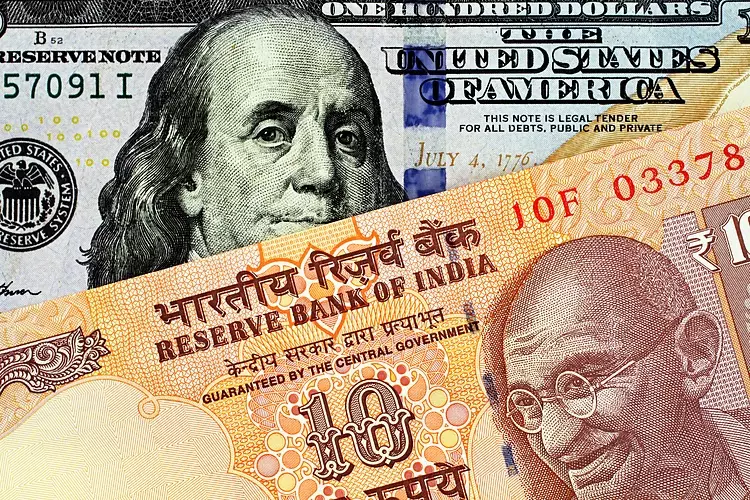The Indian Rupee (INR) has shown signs of strength recently, particularly on Friday as it gained momentum against the US Dollar (USD). One of the key factors supporting this positive movement is the cautious comments made by Federal Reserve Chair Jerome Powell, which have put downward pressure on the USD. Additionally, the optimistic outlook for the Indian economy and the influx of foreign capital have bolstered the INR and limited any potential downside for the currency.
Market participants are closely monitoring the upcoming US ISM Services PMI and employment data for April. The Nonfarm Payrolls (NFP) report is expected to show job additions of 243K in the US economy, while the Unemployment Rate is anticipated to remain steady at 3.8% for April. Any unexpected weakness in the labor market could lead to speculation about a potential rate cut by the Fed, which would weigh on the USD and further support the INR.
The recent decline in the HSBC final India Manufacturing Purchasing Managers’ Index (PMI) from 59.1 in March to 58.8 in April has raised some concerns. However, economists like Vivek Kumar of QuantEco Research have highlighted that pressures on the Indian Rupee have eased compared to the previous quarter, partly due to reduced intervention by the Reserve Bank of India (RBI).
Furthermore, the Organisation for Economic Co-operation and Development (OECD) has revised its growth forecast for India upwards by 40 basis points to 6.6% for 2024-25. This positive outlook for economic growth in India could continue to support the INR in the near term.
On a technical basis, the USD/INR pair is exhibiting a constructive stance in the daily timeframe. The pair is currently forming an ascending triangle pattern and is trading above the key 100-day Exponential Moving Average (EMA). The 14-day Relative Strength Index (RSI) remains in bullish territory around the 50 midline, suggesting a favorable outlook for further consolidation.
The lower limit of the ascending triangle and the 100-day EMA at 83.15 are acting as initial support levels for the USD/INR pair. A decisive break below this level could expose lower levels at 82.78 and 82.65. On the upside, a breach of the upper boundary at 83.71 could lead to a rally towards the psychological level of 84.00.
The value of the Indian Rupee is highly sensitive to external factors such as the price of Crude Oil, the strength of the US Dollar, and the level of foreign investment. The RBI plays a crucial role in maintaining a stable exchange rate by intervening in the forex markets and adjusting interest rates to control inflation. Higher interest rates typically strengthen the Rupee by attracting foreign investment through the ‘carry trade’ strategy.
Macroeconomic factors including inflation, interest rates, GDP growth rate, trade balance, and foreign investment inflows also play a significant role in determining the value of the Rupee. A higher growth rate and improved trade balance can lead to increased overseas investment and demand for the Rupee. Higher inflation, on the other hand, can have a negative impact on the currency by reducing its purchasing power and potentially leading to higher interest rates by the RBI.
The recent strength of the Indian Rupee can be attributed to a combination of positive economic indicators, supportive market sentiment, and external factors. However, ongoing developments in economic data and global events will continue to influence the currency’s movement in the coming days.

